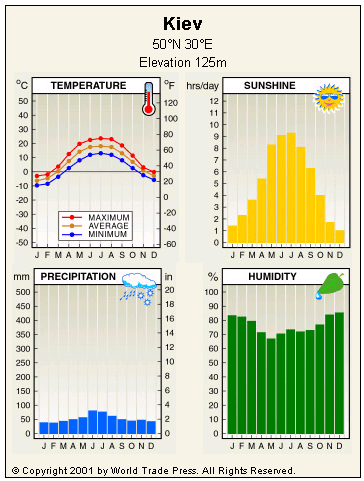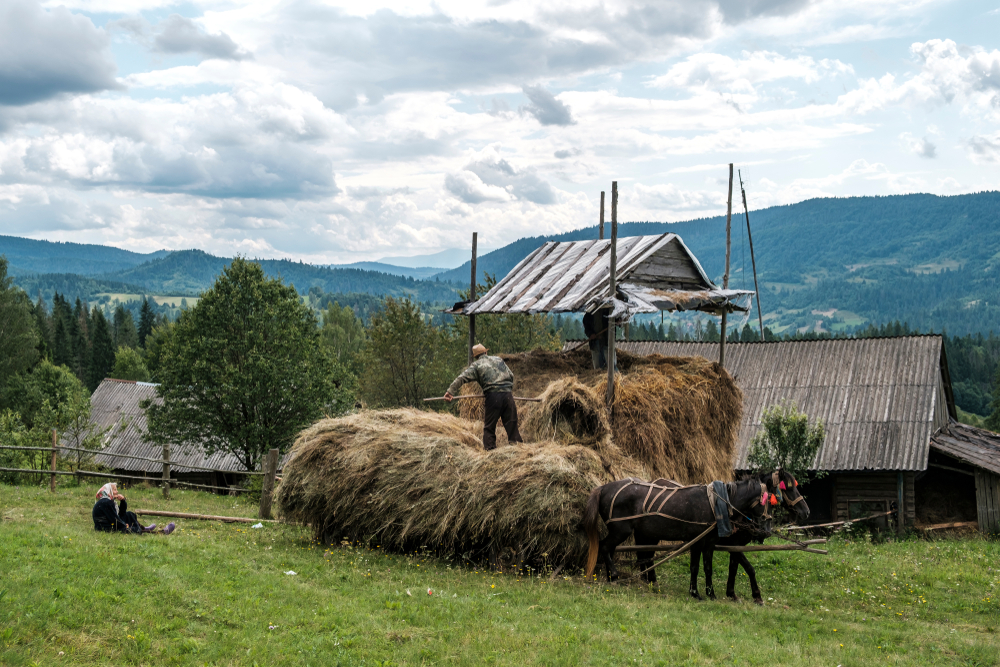Ukraine is located in Eastern Europe with the Black Sea bordering the south of the country. As the second largest country in Europe, it shows considerable climatic variation. The south of the country has a Mediterranean subtropical climate, while farther north the climate is described as temperate continental. The seasons are well defined with distinctly different weather patterns.
Seasons
Spring (April to May) brings the thaw, which commences firstly in the southwest of the country, where the land is warmed by the proximity to the Black Sea. By the middle of April, temperatures across the country are above freezing.
Summer (June to August) is warm, with typically 150 days per year above 15°C (59°F) along the coast. During this period warm air masses, moving north from Africa, can generate temperatures in excess of 35°C (95°F).
Autumn (September to October) temperatures drop rapidly particularly in the north. Some night frost is possible anywhere in the country and the incidence of both fog and rainfall increases.
Winter (November to March) is long, but relatively warm with significant frost and snowfall. The interior of the country experiences monthly average temperatures of −7°C (20°F) in January and February, while it often remains above freezing for the same period along the south coast. Brief spells of extremely cold weather may occur, when easterly winds blow from Siberia.
Regional Variations
Precipitation in Ukraine is disproportionately distributed, with the highest levels in the west and the north, and much less falling in the east and the southeast. This is largely due to the presence of the Carpathian Mountains. They rise in the west and generate rainfall from the humid Atlantic Ocean air, which moves across the country throughout the year. There are two distinct climatic regions in the country.
The Black Sea coast has mild winters and 10 or more hours of sunshine per day during the summer months. This makes it a popular summer holiday destination, although rain falls all year round with an annual precipitation of 300–450 millimeters (12–18 inches).
The interior plains and mountains have longer and colder winters. In the Carpathian Mountains winter lasts 120–130 days. Annual rainfall here averages 1,500 mm (59 in) with most of it falling during the summer months.
Copyright © 1993-2024 World Trade Press. All rights reserved.




